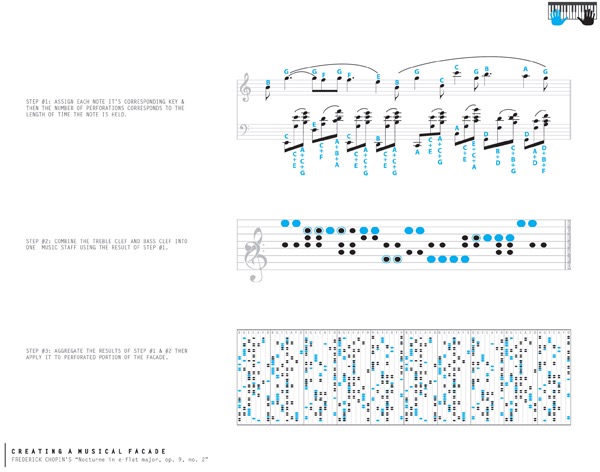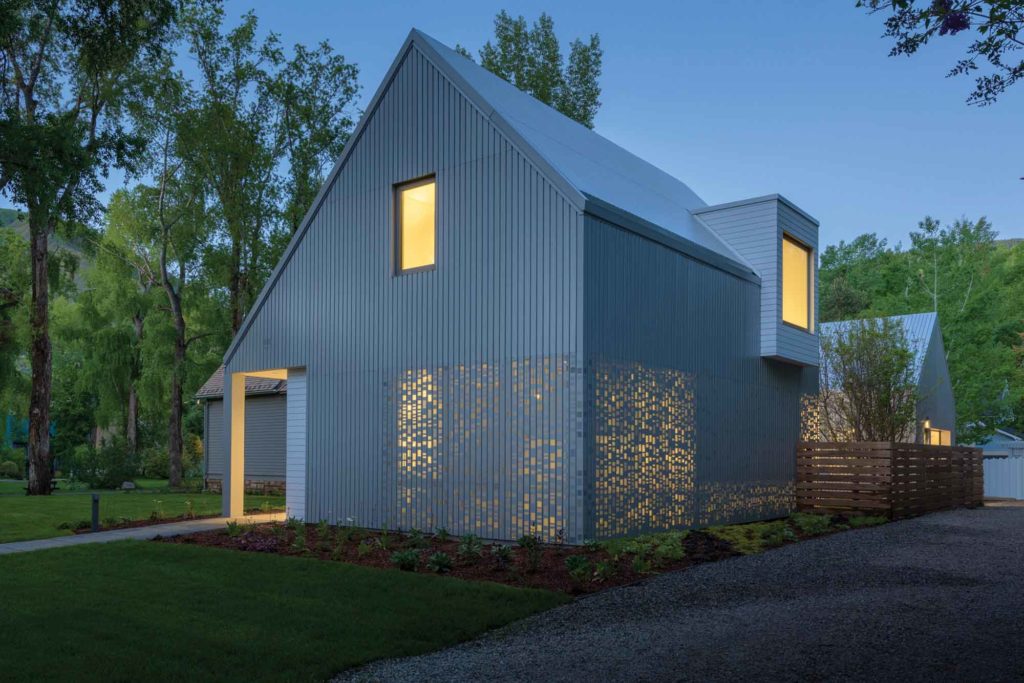When a family in Aspen, Colorado decided to expand upon their 19th century Victorian home, they were inspired by a single work of Frédéric Chopin, the Nocturne op. 9, no. 2 in E flat major. But how do you marry music with architecture? The creative team at CCY Architects took Chopin’s score and began by assigning values to each note and chord. Using the same logic that informs a player piano to play music, each note and chord was assigned a variable; this informed the design of a series of perforations in the façade that correspond to the length of time each note is held, along with its pitch. They combined the bass and treble clefs, and aggregated the results into a pattern:

The result is a musical façade that evokes Chopin’s nocturne through the play of light and shadow, creating the effect that Goethe most likely had in mind when he wrote that “Music is liquid architecture; Architecture is frozen music.” In this house you can “see” the music in the architecture.

Inside this guest house, which has a baby grand piano, the movement of the sun throughout the course of the day causes light to pass through Chopin’s architectural scrim, allowing it to dance along the staircase, walls, and floors — even, perhaps, as the owner sits at the piano and plays the nocturne that inspired this space. There are more photos, including of the interior, on the architect’s website.
My book, Chasing Chopin, begins with a contemplation of the old cliché that “writing about music is like dancing about architecture.” Well, here it really comes to life in the most surprising and beautiful way.
Thanks to CCY Architects for permission to use these images. The photograph of the house at dusk is by Draper White.